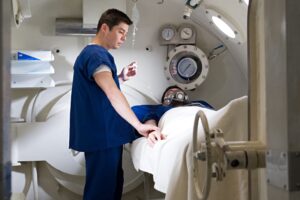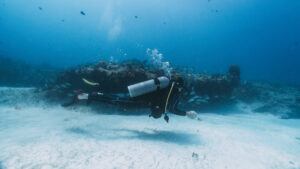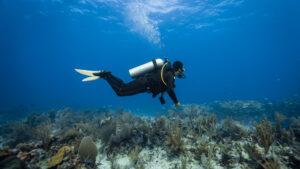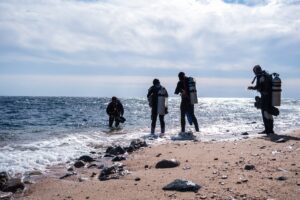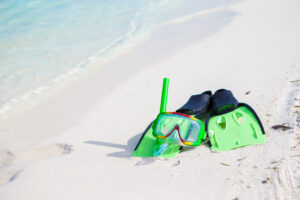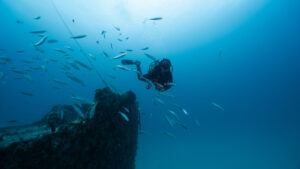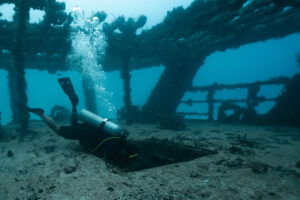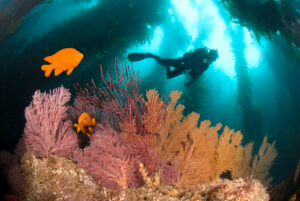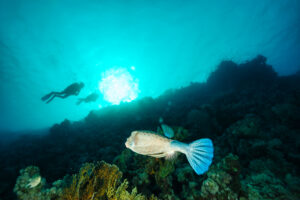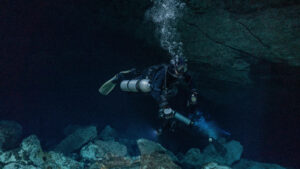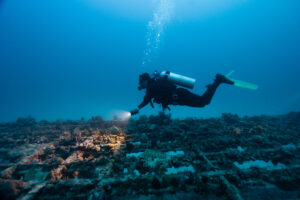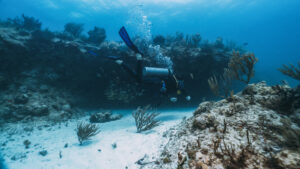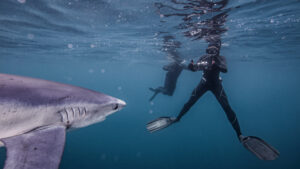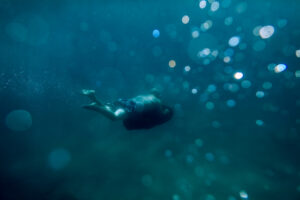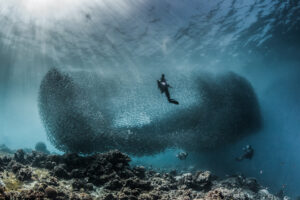What is Carbon dioxide toxicity (CO2 toxicity) from scuba diving?
Carbon dioxide (CO2) toxicity, also known as hypercapnia, is a critical concern for scuba divers. It occurs when excessive levels of CO2 accumulate in the bloodstream, leading to adverse physiological effects that range from mild discomfort to life-threatening emergencies. This entry explores the causes, symptoms, and preventive measures associated with CO2 toxicity in scuba diving.
Causes of CO2 Toxicity in Scuba Diving
The primary cause of CO2 toxicity in scuba diving is insufficient gas exchange during respiration, which prevents the effective removal of CO2 from the bloodstream. This can be attributed to several factors, including:
Rapid, shallow breathing
Divers who breathe rapidly and shallowly may not exhale fully, leading to the retention of CO2 in their lungs.
Overexertion
Strenuous physical activity can cause an increase in CO2 production, which may not be adequately eliminated through normal respiration.
Inadequate gas flow
Equipment malfunction, such as a partially blocked regulator or a kinked hose, can restrict airflow and limit the effectiveness of CO2 removal.
Rebreather malfunction
Rebreather divers rely on a closed-circuit system that scrubs CO2 from exhaled gas. Malfunctioning or poorly maintained equipment can lead to CO2 buildup in the breathing loop.
Shallow water blackout
Shallow water blackout occurs when a diver hyperventilates before diving, reducing CO2 levels in the bloodstream. As the diver descends, partial pressure of oxygen decreases, leading to hypoxia and potential unconsciousness without a warning sensation of breathlessness.
Symptoms of CO2 Toxicity
The severity of symptoms experienced by divers exposed to elevated CO2 levels depends on the concentration of CO2 in the bloodstream and the duration of exposure. Common symptoms of CO2 toxicity include:
Headache
Often described as a dull, persistent ache, a headache is one of the earliest and most common symptoms of CO2 toxicity.
Shortness of breath
Also known as dyspnea, shortness of breath can manifest as a sensation of air hunger or difficulty breathing.
Confusion and disorientation
Elevated CO2 levels can impair cognitive function, causing confusion, disorientation, and difficulty concentrating.
Dizziness and vertigo
CO2 toxicity can cause dizziness, lightheadedness, and vertigo, leading to loss of balance and coordination.
Muscle twitching and weakness
High CO2 levels can lead to involuntary muscle contractions, as well as generalized muscle weakness.
Sudden blackout
In severe cases, CO2 toxicity can cause loss of consciousness without warning. This can be particularly dangerous underwater, as it can lead to drowning or other diving-related injuries.
Prevention and Management of CO2 Toxicity
To minimize the risk of CO2 toxicity, scuba divers should:
Practice proper breathing techniques
Divers should focus on slow, deep, and regular breathing to ensure complete exhalation and effective CO2 removal.
Monitor exertion levels
Divers should avoid overexertion, particularly during deep dives, and maintain a comfortable pace to reduce CO2 production.
Regularly maintain equipment
Divers should inspect and service their equipment regularly to ensure proper function and avoid malfunctions that can contribute to CO2 buildup.
Dive with a buddy
Diving with a buddy allows for mutual monitoring of each other’s well-being, providing an extra layer of safety against potential CO2 toxicity.
Learn to recognize the symptoms
Early recognition of CO2 toxicity symptoms can help divers take appropriate action to manage their CO2 levels before the situation becomes critical.
Take immediate action if symptoms appear
If a diver experiences symptoms of CO2 toxicity, they should immediately signal their buddy, ascend to a shallower depth, and focus on slow, deep breaths to help expel excess CO2. In severe cases, a controlled emergency ascent may be necessary.
Train for emergency situations
Divers should undergo regular training and refresher courses to maintain familiarity with emergency procedures, including how to manage CO2 toxicity symptoms and perform assisted ascents.
Use appropriate equipment
Divers using rebreathers should ensure they are properly trained and familiar with their specific equipment, perform pre-dive checks, and adhere to manufacturer guidelines for maintenance and usage.
Monitor dive duration and depth
Prolonged exposure to high partial pressures of CO2 can increase the risk of toxicity. Divers should monitor their dive duration and depth to stay within safe limits.
Maintain physical fitness
A good level of physical fitness can help divers better manage their CO2 levels during a dive. Regular exercise, proper nutrition, and staying well-hydrated can contribute to overall health and diving safety.
Carbon dioxide toxicity is a significant hazard for scuba divers, and its consequences can range from mild discomfort to life-threatening emergencies. Understanding the causes, symptoms, and preventive measures is essential for all divers to minimize the risk of CO2 toxicity and ensure a safe and enjoyable diving experience. By adhering to best practices, maintaining equipment, and staying vigilant for the signs of CO2 toxicity, divers can take proactive steps to protect themselves and their dive buddies from this potentially dangerous condition.


